Contents
How to appreciate the various colors and patterns of oil-spot Jian zhan
The oil-spot Jian Zhan teacup is a unique type of ceramic ware. Unlike the translucency and vibrant colors of celadon or white porcelain, Jian Zhan captivates people with its understated charm. However, appreciating the beauty of a Jian Zhan can be an elusive task. This guide will help you understand how to properly admire the allure of an oil-spot Jian Zhan.
Oil-spot Jian Zhan is a variety of Jian kiln ceramics characterized by its glaze, which is densely covered with small metallic luster spots in silver-gray. These spots range in size from as tiny as a needle tip to several millimeters, resembling oil droplets.
The patterns on the glaze surface are crystallized metallic luster dots in silver-white, distributed like rain droplets or the floating oil drops that appear when cooking. These “oil spots” are formed due to the accumulation of iron oxides on the glaze surface, which crystallize into hematite and magnetite during cooling.
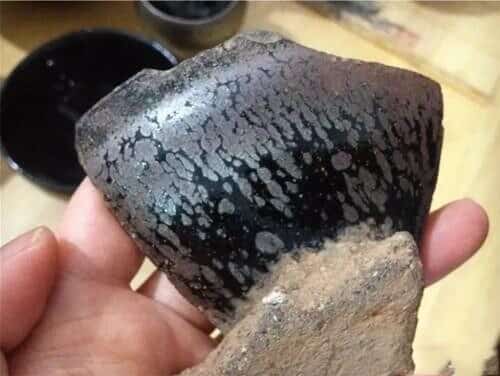
When the crystalline spots appear reddish-yellow on the black glaze, it is called “gold oil-spot.”
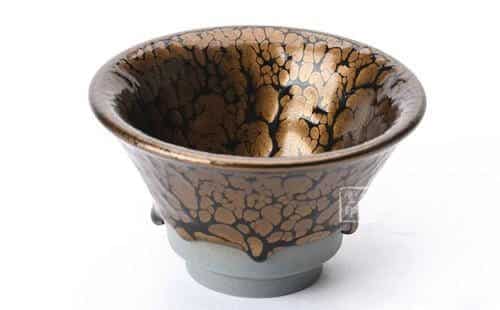
When they appear silver or silvery-white, it is referred to as “silver oil-spot.”
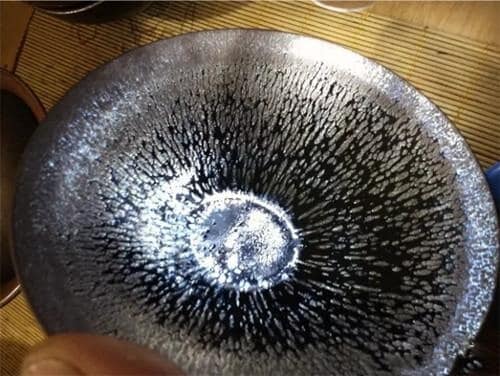
Historical Jian Zhan Fragments
Let’s first look at authentic ancient fragments unearthed from the Jian kiln. Under a 500x microscope, these fragments reveal intricate oil-spot patterns. One example is a partridge feather fragment, whose pattern resembles the feathers of a partridge bird—only such patterns qualify as true partridge feather designs.
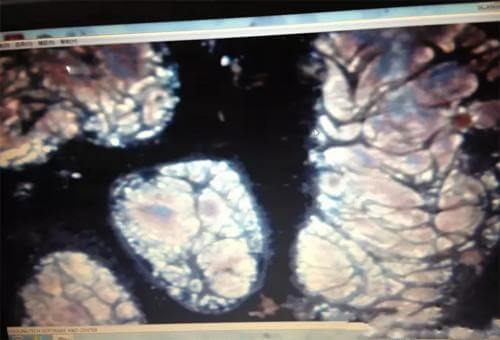
Modern Reproductions
With the revival of Jian Zhan craftsmanship, modern reproductions have achieved patterns very close to those of ancient pieces. Some well-maintained Jian Zhan teacups even develop colorful light spots over time, creating stunning visual effects.

How to Appreciate Oil-Spot Jian Zhan
Oil-spot teacups are typically small in size and require close-up observation to fully appreciate their beauty. When evaluating such ceramics:
Examine not only the shape and body color but also the subtle differences in the glaze’s spots across various parts of the teacup.
Look for valuable information within the glaze’s patterns before assessing the overall effect.
Compare pieces of the same type for a better understanding—comparison enhances appreciation.
Observe under strong light (preferably sunlight). High-quality oil-spot Jian Zhan will display dazzling colors like silver, silver-blue, gold, or even multicolored hues under sunlight. This unique texture exudes an enchanting beauty exclusive to premium Jian Zhan.
In contrast, brownish or grayish patterns with weak metallic luster show little change under sunlight and are less captivating. For instance, some have mistaken brown rabbit’s fur patterns for golden ones—sunlight can easily distinguish between them.
Evaluating Oil-Spot Patterns
The color of the spots is a key factor in determining the quality of an oil-spot teacup. The progression from gray → brown → silver-white → silver-blue → golden → multicolored reflects increasing difficulty in production and aesthetic appeal. The firing process becomes exponentially more challenging as one ascends this spectrum.
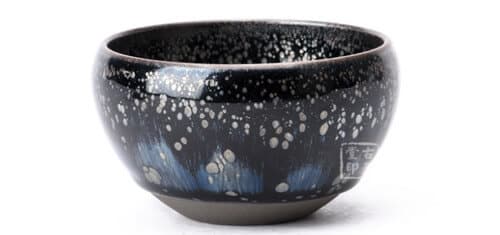
Regarding spot shapes:
Larger, oval-shaped spots with high clarity and balanced density are generally considered superior.
For high-grade oil-spot pieces with different colors, shape becomes less critical since each collector has their own aesthetic preferences.
Artistic effect takes precedence; for example, silver-blue spots may have a more profound and mysterious texture but slightly lower clarity compared to silver-white ones.
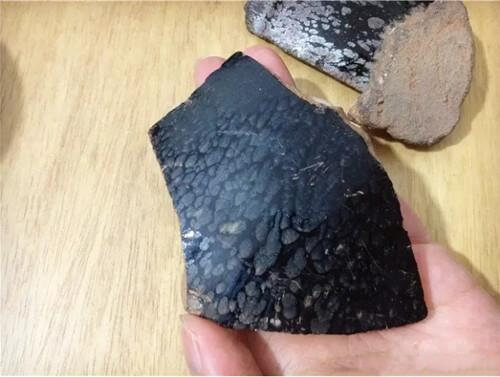
Each high-quality oil-spot Jian Zhan has its unique characteristics and imperfections. Therefore, evaluation should focus on overall artistic impact rather than isolated details.
The Beauty of Jian Zhan
The beauty of Jian Zhan lies in its form—it represents its “skeleton,” supporting its overall style and embodying its soul. The shapes of Song Dynasty teacups are particularly iconic: timelessly elegant yet understatedly grand.
Every piece of Jian Zhan is an irreplicable work of art—each one is a unique masterpiece in this world! A perfect Jian Zhan embodies time, human emotion, temperature, and serendipity—elements that cannot be quantified but only felt deeply.






